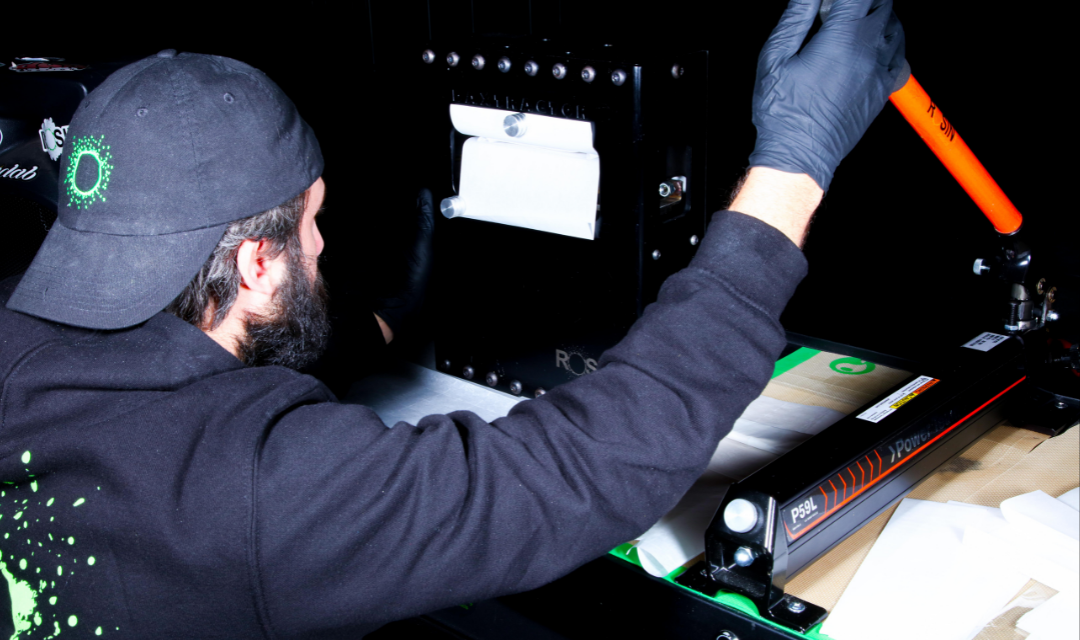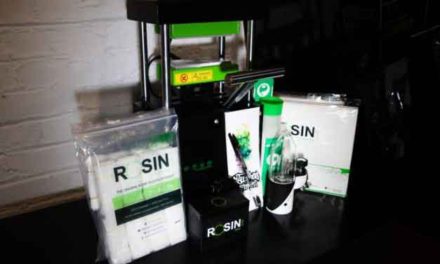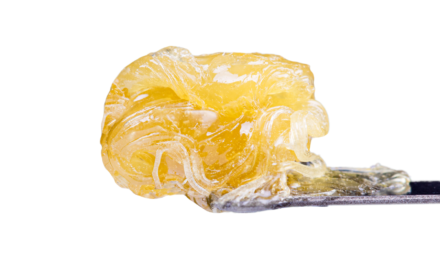In our experience, the quality of the material being pressed is far more crucial to the size of the yield than the pressure being exerted by the rosin press. Let’s take ice water hash, a material we work with regularly at Rosin Tech Labs(https://rosintechlabs.com/), as an example. If we use all of the produced ice water hash from a batch in our presses, we could expect a 60% yield. But if we only used the highest quality ice water hash, that percentage would leap to 85%. Applying more pressure could get us closer to the full 100% of “total potential yield”, but the pressure doesn’t impact the yield nearly as much as the quality of the starting material. But since pressure does matter and is something you can easily control with your rosin press, we’re going to discuss how to find the best perimeter/area ratio to give you the right amount of pressure for your rosin bag size.
How to Optimize Your Perimeter/Area Ratio
While at times pressing rosin can feel like an artform completely removed from science, the optimal amount of pressure can be calculated using a simple, tried-and-true mathematical equation:
Force (lbf)/Area (in^2) = Pressure (psi)
Pound-force per square inch, often abbreviated to simply “pound per square inch” is a unit of pressure often symbolized as either “lbf” or “in^2” and abbreviated as “psi”. This unit measures pressure per a force of one pound-force exerted onto one square inch. In systems that use US customary measurements or Imperial units, you’ll find pounds per square inch measured as psi.
But calculating the optimal pressure is just half the battle. You also need to make sure that heat is being applied evenly and consistently, which is where a quality rosin press is critical. It can be tempting to simply seek out the rosin press with the biggest plates, apply the highest pressure possible and wait for a tidal wave of yields. A lot of voices in the 710 community may even support this idea. But it doesn’t always work out the way you’re imagining. A sudden jolt of extreme pressure can find plant matter and debris drifting into the resulting extract, contaminating its purity. Utilizing the above equation allows you to subject your rosin bag to the perfect amount of pressure while a quality press handles the heat distribution.
Which Rosin Press is Right for the Job?
So how do you select that perfect rosin press with so many options on the market? The 3 primary factors that are crucial to the right rosin press are:
- Even heat distribution
- Rectangular plates
- Optimal pressure capacity
In most cases, you’ll want to use a rosin press with rectangular plates, though we offer models with square plates such as the Rosin Tech Go 2 portable press(https://www.rosintechproducts.com/products/rosin-tech-go-2) and the Rosin Bomb Rocket(https://www.rosintechproducts.com/products/rosinbomb-rocket-portable-rosin-press). Presses with square plates are better suited for the bottle tech style of pressing which lends to a vertical format. But in most cases, you’ll be engaging in a more traditional horizontal pressing style, so we recommend using rosin presses with rectangular plates. In those cases, a narrow platform is more ideal than a wider platform.
The Rosin Tech Go 2 and Rosin Bomb Rocket are also both portable presses with small plates, so there’s very little risk of your extract getting stuck on the square hot plate and losing potency. Even at the dead center of the rectangle, the rosin is never too far from the edge. Besides allowing easier collection of rosin, narrow plates optimize the physics of your rosin press. With that in mind, you’ll also want to choose rosin bags that keep the distance from the bag’s center to the bag’s edge at a minimum. The further your rosin has to travel to the edge of the heat plate, the more you’re burning off precious quality. In a worst-case scenario, the extra distance can result in rosin being trapped inside the bag, cooking away any hopes of a fruitful yield.
Determining Perimeter/Area Ratio Based on Rosin Bag Size
We can simplify the metrics for your calculations by summarizing your chosen rosin bag size with a single figure that represents its perimeter/area ratio. Your goal is to perfect the perimeter/area ratio. To calculate these figures, simply use the following equations:
Length(L1) x Length(L2) = Area (A)
2 x Length (L1) + 2 x Length (L2) = Perimeter (P)
Let’s use our own 1.25” x 3.25” rosin bags(https://www.rosintechproducts.com/products/rtp-rosin-bags-2-inch-by-3-5-inch-10-pack?_pos=1&_sid=d31dc88d9&_ss=r) as an example.
Using the equation Length(L1) x Length(L2) = Area (A), we can determine:
1.25”(L1) x 3.25”(L2) = 4.06”(A)
Using the equation 2 x Length (L1) + 2 x Length (L2) = Perimeter (P), we can determine:
2.50”(2 x L1) + 6.50”(2 x L2) = 9.00”(P)
Therefore, the perimeter/area ratio for our 1.25” x 3.25” rosin bags is 9.00”/4.06” = 2.22”.
The higher the resulting figure from your perimeter/area ratio calculation, the better.
Even Distribution of Heat
In your pressing experiments, you quickly learned how closely viscosity relates to the temperature of your heat plates. To lower the viscosity to the point where you get that smooth, honey-like flow, it’s not enough to dial in a higher temperature. You need a rosin press that’s design lends to a uniform distribution of that heat. Rosin is such a sensitive, delicate substance that even a nuanced shift in heat can result in a radically different consistency. You can’t afford cooler areas when shooting for top-of-your-game yields. If the viscosity of your rosin experiences unplanned changes, it disrupts that silky flow, overexposing your rosin to the heat plates and wiping out any chance of a bountiful yield.
Calculating the Pressure Sweet Spot
So, you’ve got the right rosin bags, you’ve got a press that evenly distributes heat… how do you determine the perfect amount of pressure? There are a small army of variables that can impact pressure and you need to take all of them into account. These include:
- What you’re pressing (pollen discs, flower, ice hash, etc.)
- Environmental humidity
- Quality and age of your material
- Type of curing
With Pressure, Less Can Often Be More
Going back to our introduction, the main takeaway is that more pressure does not always mean higher yields and it definitely doesn’t guarantee a higher quality product. In fact, increasing pressure too much will actually hurt the quality of your rosin. You’ll find that the pressing begins a lot more quickly than most people expect and at a much lower pressure. Keeping that in mind, you can press with premium quality results as low as 600 psi for flower. For ice hash, pollen discs and even loose kief, you can drop as low as 300 psi and still see golden results. But as we mentioned above, a lot of factors can influence your psi, so it’s important to remember that you get what you give when pressing rosin. That’s why we exclusively use top shelf flower when pressing over at our Rosin Tech Labs facility.
Calculating the Amount of Force at the Rosin Bag
The amount of force at the bag can be figured using the relatively simple equation that began this blog:
Force (lbf)/Area (in^2) = Pressure (psi)
For simplicity, we’re using the 1.25” x 3.25” rosin bags we used in our initial example. We can calculate the area by using the equation from our first example:
Length(L1) x Length(L2) = Area (A)
1.25”(L1) x 3.25”(L2) = 4.06”(A)
Now we need to calculate the force exerted by our rosin press. We’ll use one of our most popular presses, the Rosin Tech Big Smash(https://www.rosintechproducts.com/products/rosin-tech-big-smash?_pos=10&_sid=18db798e3&_ss=r), in this example. The Big Smash producers 4 tons of force or 8,000 pounds-force. Now, we can simply plug these figures into the initial equation to determine:
8,000(lbf)/4.06”(in^2) = 1,970 (psi)
So, when using a Rosin Tech Big Smash with our 1.25” x 3.25”, you can start with a pressure of 1,970 psi as a safe estimate for both high yields and quality. As you adjust all of your variables such as pressing different types of material or testing different heat settings, your consistent pressure will help you to keep a better track of the impact of your adjustments. Just remember to adjust your equation if you switch to a different rosin bag size or a different rosin press.
Pressure isn’t everything… but it’s something. While we’re major proponents of the belief that your yields are strongly dependent on the quality of your starting material, we acknowledge that pressure is a factor in the size of your yields. This doesn’t always mean that higher pressure results in higher yields. Higher pressure can even have an adverse effect, resulting in lighter yields and diminished quality. Experiment with the equations above to see if it helps with your yields, but don’t go cheap on the quality starting material!





